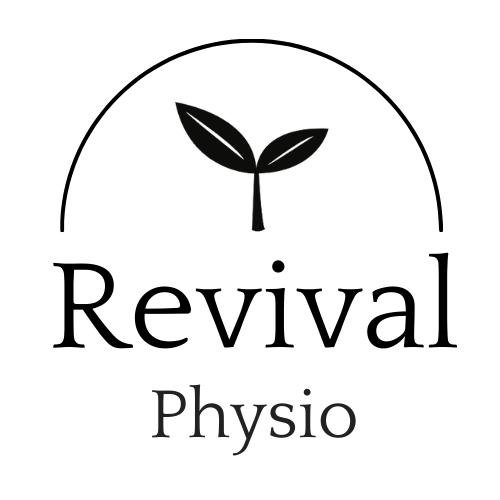
Physiotherapy to Correct Postural Dysfunction and Improve Your Posture
Postural dysfunction refers to improper alignment of the body that can lead to pain and discomfort, particularly in the spine, neck, and shoulders. Common causes include prolonged sitting, repetitive movements, and a general lack of awareness regarding body mechanics. Over time, these issues can contribute to various musculoskeletal problems, including tension headaches, back pain, and reduced flexibility.
Physiotherapy plays a crucial role in addressing postural dysfunction. Physiotherapists assess an individual's posture, identify contributing factors, and develop tailored treatment plans. These may include exercises to strengthen weak muscles, stretching to improve flexibility, and education on proper body mechanics to foster better alignment throughout daily activities.
COMMON POSTURAL ISSUES
Forward head posture (FHP) is a common postural alignment issue where the head is positioned forward relative to the spine. This condition can lead to various complications, including neck pain/tension, shoulder discomfort, chronic headaches, and decreased mobility. FHP often arises from prolonged activities such as working at a computer, using smartphones, or even poor sleeping positions. This can cause pinched nerves at the base of the neck, leading to numbness symptoms down the arms and fingers.
Treatment often includes:
Postural Re-education: Learning proper alignment can significantly alleviate the symptoms associated with FHP. Physiotherapists can provide guidance on optimal positioning during daily activities.
Stretching and Strengthening Exercises: A tailored exercise program may focus on stretching overactive muscles in the chest and front of the neck while strengthening the underactive muscles in the upper back and neck. Exercises such as chin tucks, shoulder blade squeezes, and neck stretches may be included.
Manual Therapy: Techniques such as literally PUSHING the head back, as well as joint mobilizations and soft tissue work can help to relieve tightness and improve range of motion in the neck and shoulders.
Education: Understanding the effects of forward head posture and learning ergonomic principles can help patients make informed choices to reduce further strain.
Home Exercises: Patients are often given a home exercise regimen to encourage consistent practice, which is essential for long-term improvement.
Rounded shoulders, often a result of poor posture, prolonged sitting, or muscle imbalances, can lead to discomfort and impact overall mobility. Physiotherapy plays a vital role in addressing this condition through various treatment approaches. This can turn your shoulder muscles “OFF” and/or cause a pinching sensation in the shoulder when you try to lift anything past 60 degrees.
Treatment often includes:
Exercise Therapy
Specific exercises are essential for correcting rounded shoulders. Strengthening the upper back muscles (such as the rhomboids and trapezius) can help pull the shoulders back into a more neutral position. Stretching exercises targeting the chest muscles can also alleviate tightness, which often contributes to poor posture.Posture Correction Techniques
Physiotherapists will educate patients on proper ergonomic practices, including how to maintain good posture while sitting, standing, and performing daily activities. This might involve adjustments to workstations or the use of supportive equipment.Manual Therapy
Manual therapy techniques, such as massage or joint mobilizations, may be employed to relieve muscle tension and improve the range of motion in the shoulders and upper back.Progress Monitoring
Regular follow-ups allow the physiotherapist to monitor progress, adjust treatment plans, and ensure that the patient is adhering to home exercise routines.
Tucked Bum (aka “flat bum syndrome”) Posterior pelvic tilt (PPT) refers to a movement that occurs when the pelvis rotates backward, leading to a flattening of the lumbar spine. This can turn your gluts “OFF” and make it hard to strengthen your gluts, leading to chronic hamstring/calf/quad tension.
Treatment often includes:
Stretching Tight Muscles: Focus on the hip flexors and lower back muscles to alleviate tightness. Common stretches include the hip flexor stretch and the cat-cow stretch.
Strengthening Weak Muscles: Targeting the glutes, hamstrings, and core can help restore balance. Exercises such as bridges, planks, and squats are effective.Postural Education: Teaching proper posture and body mechanics during activities can help prevent excessive posterior pelvic tilt. Ergonomic adjustments to workspaces may also be recommended.
Functional Activities: Incorporating exercises that mimic daily activities can aid in the functional application of improved pelvic alignment.
Manual Therapy: In some cases, hands-on techniques may be used to improve mobility and reduce pain.
By addressing postural dysfunction through physiotherapy, individuals can experience improved functionality, reduced pain, and an enhanced quality of life. Regular follow-ups with a physiotherapist can help ensure long-term success in maintaining proper posture and preventing recurrence of related issues. Book with one of our expert physiotherapists for a posture assessment today!

